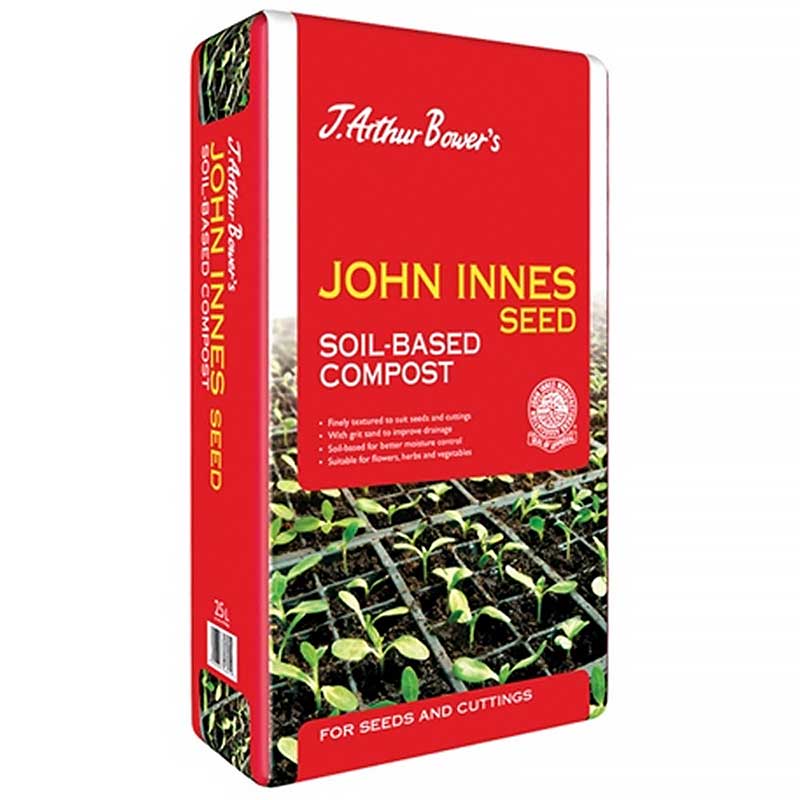John Innes No2 compost is a popular potting mix used by gardeners to grow healthy, thriving plants In this article, we’ll take an in-depth look at what makes John Innes No.2 different and how to use it for the best results.
What is John Innes No.2 Compost?
John Innes No.2 is a loam-based potting compost that was originally developed in the 1930s by John Innes, an English horticulturist. It is made from a blend of loam, peat, and coarse grit along with added nutrients like lime and fertilizers.
The loam provides structure and nutrients. Peat helps retain moisture and aerate the soil. Grit gives drainage. The lime balances the pH levels. And the fertilizers supply extra nutrients for growing plants.
This specially formulated mix creates ideal growing conditions for most plants. John Innes No2 is a “light” mix that’s designed for establishing and growing on young plants in pots and containers.
Key Features of John Innes No.2:
-
Nutrient-rich – Contains balanced nutrients to feed plants and encourage strong roots and growth.
-
Moisture retentive – The peat and loam hold moisture well so less frequent watering is needed.
-
Good drainage – Coarse grit provides drainage to prevent compaction and waterlogging.
-
Open texture – Loose, crumbly texture allows room for roots to spread and breathe.
-
Stable pH – Lime balances the pH between 6-6.5, ideal for most plants besides ericaceous.
When to Use John Innes No.2
John Innes No.2 is intended for the potting on or transplanting stage of growing. It gives young plants an optimal mix to establish roots and grow stronger before their final planting.
Here are the best uses for John Innes No.2 compost:
- Potting on seedlings into larger containers
- Transplanting young plants into pots after propagation
- Repotting houseplants to provide fresh growing medium
- Growing tender perennials, annuals, vegetables, and greenhouse plants
- Establishing shrubs, trees, and roses in containers before planting out
It can be used all year round for propagating and potting on various plants. John Innes No.2 is suitable for most garden plants besides lime-hating varieties.
How to Use John Innes No.2 Compost
Using John Innes No.2 is simple. Follow
Are John Innes composts peat free?

Peat is used in the traditional recipe for John Innes composts, but some are now made with materials other than peat.
What are the different types of John Innes composts?

John Innes potting soil comes in three different types: John Innes No. 1, John Innes No. 2, and John Innes No. 3. These numbers refer to the varying levels of fertilizer included in the mix, to suit different uses. You can use John Innes compost for seeds and cuttings, and there is also an ericaceous compost that doesn’t have any lime in it and is good for acid-loving plants like blueberry, rhododendron, azalea, camellia, and pieris.
John Innes No 1 is designed for pricking out or potting on young seedlings or rooted cuttings. It has a small, carefully calculated amount of fertilizer in it so that it gives plants enough food to grow without burning the tender new roots.
John Innes No. 2 has a moderate amount of fertilizer in it and is used to pot on plants that are ready to grow on to the next stage. Most vegetables also use it.
John Innes No. 3 has the most fertilizer and is best for mature plants like shrubs, small trees, perennials, and conifers that are growing in pots.
What is John Innes Number 2 Compost
What is John Innes No 2 potting-on compost?
John Innes No 2 Potting-On Compost, a loam based compost which is a naturally reduced peat mix, is specifically designed for the growth & establishment of plants. This compost has a rich, nutrient content making it suitable for vigorous plants such as Tomatoes, Cucumbers, Geraniums, Fuchsias and most house plants.
Is John Innes compost lime free?
There’s also John Innes compost for seed and cuttings, as well as an ericaceous compost which is lime-free and suitable for acid-loving (lime-hating) plants including blueberry, rhododendron, azalea, camellia, and pieris. John Innes No 1 is designed for pricking out or potting on young seedlings or rooted cuttings.
What is the main ingredient in John Innes compost?
Loam – Loam is the most important ingredient in all John Innes compost, supplying the main body of the compost. The loam supplies the nutrition needed for the base of the plant, which helps to absorb and release plant nutrients as required.
Does John Innes compost have peat?
Most potting compost or media offered is soil-less and either based entirely on peat, has some peat in its formulation or is peat-free. There are advantages, however, to soil based media and John Innes mixes are widely used. Be aware though; currently offered JI composts may differ from the traditional product and some still contain peat.

